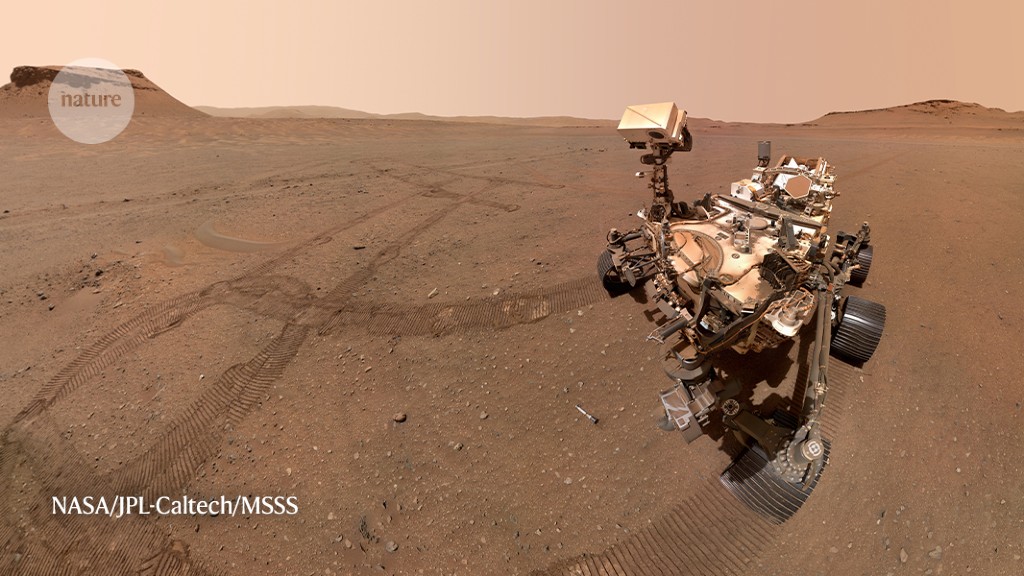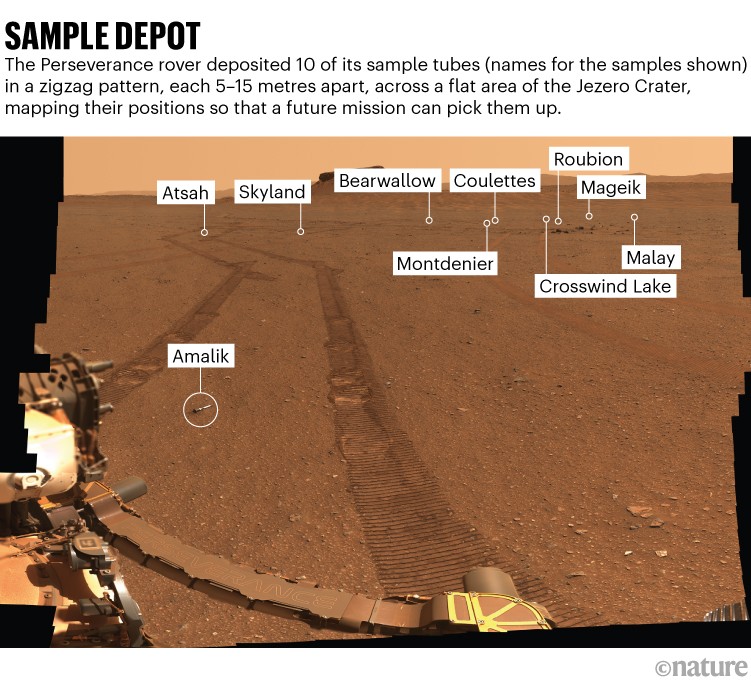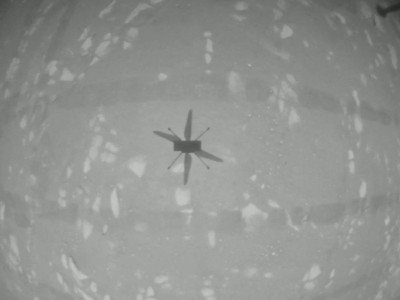NASA’s Perseverance rover took a selfie on 22 January as it deposited one of a number of sample tubes (visible at the rover’s base) on a flat area of Jezero Crater.Credit: NASA/JPL-Caltech/MSSS
For decades, scientists who study Mars have watched in envy as spacecraft brought pieces of the Moon, chunks of asteroids and even samples of the solar wind to Earth to be studied. Now some of those researchers might finally be on track to receive rocks from the red planet — but only if NASA and the European Space Agency (ESA) can pull off a complex and daring mission.
Title not specified
For several years, the two agencies have been planning to send spacecraft to Mars, starting no earlier than 2027, to pick up rock samples that are being collected by NASA’s Perseverance rover. But technological and financial hurdles could derail the multi-billion-dollar scheme. Last month, NASA said it wants to allocate nearly US$1 billion to Mars sample return in the upcoming fiscal year — a huge sum that could force the agency to dip into other parts of its science budget. This would affect other projects, potentially delaying a planned heliophysics mission, for example. And much is at stake for the Mars sample return: Perseverance has gathered a scientifically stunning set of rocks. In December and January, the rover deposited ten cigar-sized tubes filled with rock, soil and air from the Martian atmosphere on a flat area of the planet’s surface for a future mission to pick up (see ‘Sample depot’).
In the coming months, NASA and ESA will have to make crucial decisions about what exactly the mission will look like and how much they think they can spend on it. “We’ve had a lot of questions about containing the cost for Mars sample return,” said Nicola Fox, head of science for NASA, at a 23 March town hall meeting about the agency’s budget. “We are doing a very, very deep dive into [it].”
A complex mission
NASA and ESA have agreed on the basic outline of a Mars sample-return mission. No earlier than 2027, ESA plans to launch a spacecraft that would fly to Mars and orbit the planet. The next year, NASA would send another spacecraft to land on the planet’s surface — in or near Jezero Crater, where Perseverance is exploring — and put the rock samples into a container. A rocket carrying the container would then depart from the Martian surface and travel into orbit to meet the ESA spacecraft, which would capture it and fly it to Earth, landing in the Utah desert no earlier than 2033.
Image credit: NASA/JPL-Caltech/ASU/MSSS.
That is a lot of steps that would have to be successful for the whole thing to work. “The mission remains complex,” said Jeff Gramling, director of Mars sample return at NASA headquarters in Washington DC, at the town hall meeting.
Among the new inventions needed for Mars sample return are the rocket that would be launched from the Martian surface and miniature helicopters with wheels and claw-like grippers. If Perseverance cannot, for some reason, hand samples stored in its belly to NASA’s future lander, the helicopters would be released from the lander and would grab the samples laid down earlier on the ground. They will be modelled on the helicopter Ingenuity, which accompanied Perseverance to Jezero Crater and has so far made 48 flights.
A year on Mars: How NASA’s Perseverance hit a geological jackpot
But one of the two planned helicopters might have to be dropped from the project to save money, NASA revealed in a budget proposal released on 13 March. The proposal also suggested delaying a space-weather mission, the Geospace Dynamics Constellation, to free up funds for Mars sample return. “The problem is, it’s unclear how much [cost] growth there will be, and how it will affect not just planetary projects, but projects across NASA,” says Louise Prockter, a planetary scientist at the Johns Hopkins University Applied Physics Laboratory in Laurel, Maryland. Another cloud looming over the plan is that much of NASA’s contribution to Mars sample return is being run by its Jet Propulsion Laboratory in Pasadena, California, where management problems delayed the launch of the Psyche asteroid mission — originally planned for last year and now rescheduled for October 2023 — and have put a Venus mission on pause indefinitely.
In the next few months, NASA and ESA will be finalizing the design of all of the Mars sample-return components and determining the first comprehensive cost estimate for the mission. At that point, the agencies will bring in an independent review board, which is currently being assembled, to assess the design, schedule and required funding. All of this comes on top of other Mars commitments: NASA has expanded its support for ESA’s planned Rosalind Franklin Mars rover, which was derailed when Russia — an intended collaborator — invaded Ukraine. And NASA has introduced a new set of robotic Mars missions of its own.
High-value rocks
Nonetheless, NASA and ESA are forging ahead. They are setting up procedures for how Mars samples would be handled once back on Earth, including new planetary-protection protocols for sterilizing the dusty exterior of the orbiting sample container. And the agencies are putting together a group of researchers to define what kinds of scientific measurement need to be made on the samples once they are in Earthly laboratories.
This photomontage was created from the images Perseverance took of each sample tube after it laid them down on Mars’s surface.Credit:NASA/JPL-Caltech/MSSS
All of which is crucial because of the high value of the samples Perseverance gathered. The rover landed in Jezero in February 2021 and has driven nearly 17 kilometres around the crater since then, collecting different types of rock that could shed light on Martian history. This includes picking up samples that might contain evidence of past life on Mars — the search for which is the mission’s key goal.
Lift off! First flight on Mars launches new way to explore worlds
The ten tubes that have been deposited would represent a bonanza for Martian science. Some contain igneous rocks, which solidify directly from molten rock and would allow scientists to determine the age of parts of the Martian surface for the first time. And two samples, collected at sites known as Hogwallow Flats and Yori Pass, contain rocks that formed from fine-grained sediments that interacted with water over time — an ideal environment in which life can thrive. (Jezero Crater once held a lake fed by a river that left behind an ancient river delta.)
At the Lunar and Planetary Science Conference in The Woodlands, Texas, last month, Adrian Broz at the University of Oregon in Eugene described how water percolating through the rocks of Hogwallow Flats probably altered their appearance and chemistry. And Kathy Benison at West Virginia University in Morgantown spoke about sulfate minerals detected in the rocks by Perseverance, saying that there is a good chance of these preserving biosignatures of ancient organisms, if such organisms ever existed.
In the meantime, Perseverance trundles on. In recent weeks it has climbed atop the ancient river delta in Jezero Crater and is working its way through spectacular outcrops of river deposits, gathering more samples as it goes. On 30 March it collected its nineteenth sample, from a rock on the delta that is rich in carbonate — another mineral that is excellent at preserving signs of past life.













More News
Author Correction: Stepwise activation of a metabotropic glutamate receptor – Nature
Changing rainforest to plantations shifts tropical food webs
Streamlined skull helps foxes take a nosedive